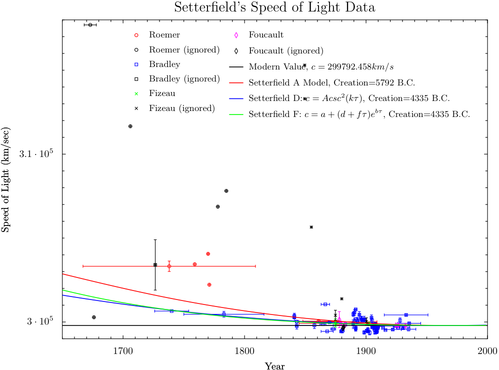- This past Saturday (October 25), I attended a conference in Washington DC sponsored by Reasons To Believe, titled “What Darwin Didn't Know”. Reasons to Believe is an organization of Old-Earth creationists (OEC). I'm not sure how I feel about OEC. In some regards, I think they are a sign of hope that more Christians can accept modern science with their theology. For the most part, I have few issues to argue with them on astrophysical evidence since they agree with modern astronomy and geology that the Earth and universe are billions of years old. However, even as someone with no professional training in biology, I found some of their claims in biology, particularly in regards to their version of 'Intelligent Design', to be very questionable. Some of the arguments they promoted are not that far from Young-Earth creationism claims. I've got many pages of notes from this day that I hope to add to this blog over the next few weeks. I just finished reading Hugh Ross' “A Matter of Days” and also purchased “The Creator and the Cosmos” and “Creation as Science”, also by Ross. I'll probably post a review sometime in the future.
- I've actually been contacted by John Hartnett over my posts on his cosmology claims. He graciously sent me a copy of the latest version of one of his papers I'm commenting about and mentioned another paper under review. I need to follow-up on some of those issues. To reproduce Hartnett's work and examine other issues he does not mention, I've been rewriting my old time-series analysis codes. These programs were originally written in a programming language called IDL on a VAXStation under VMS. I'm re-writing them to run in Python on modern hardware. I'm also modifying them to handle spatial analyses (1-D and maybe even 3-D) and have encountered some discrepancies. I'm not yet certain of the cause of the discrepancies so I'm expanding my code testing scenarios. While the latest version of the Hartnett's paper seems to have backed away from a claim of strict redshift quantization, other creationists still invoke it. Once my software revisions are complete, I expect my software will still get some rather extensive use in this area. Some might ask why I don't use the same software as Dr. Hartnett, which he reports is Mathematica. The main reason is that science hinges on reproducibility. Since the algorithms should always be identical, in principle, it should not matter which tools are used. This provides additional validation of the analysis techniques and the tools.
- In what is certainly the most interesting inquiry I've received in quite some time, I've had a creationist who presented at the '2008 International Conference on Creationism' ask me to examine his cosmological model and offer my criticisms. I may post some details on this discussion in the future.
- When I heard about Barry Setterfield's revisions to his claims of a variable speed of light and integration with plasma cosmology (see my previous posts), I conducted a web search to see if others had posted on the topic. In the process, I stumbled across a response to my article, “The Electric Sky: Short-Circuited” on one of the Electric Cosmos forums. I hope to include responses to this in the near future.
So that's what's backlogged on my To Do list for November/Winter 2008/2009. I wonder if I'll complete it all...










